Ocellated synodontis - Synodontis ocellifer
Scientific name: Synodontis ocellifer
Common name: Ocellated synodontis
Family: Mochokidae
Usual size in fish tanks: 30 - 50 cm (11.81 - 19.69 inch)
014
Recommended pH range: 6.5 - 7.8
Recommended water hardness: 4 - 15°N (71.43 - 267.86ppm)
0°C 32°F30°C 86°F
Recommended temperature range: 23 - 27 °C (73.4 - 80.6°F)
The way how these fish reproduce: Spawning
Where the species comes from: Africa
Temperament to its own species: peaceful
Temperament toward other fish species: peaceful
Usual place in the tank: Bottom levels
General Information
Ocellated synodontis (Synodontis ocellifer) is a large West African mochokid catfish from the Senegal, Gambia, Niger (incl. Benue), Volta and Lake Chad basins, with additional records from Ghana’s Densu and Nigeria’s Kwa Ibo systems. In the wild it’s a benthopelagic, potamodromous river fish (bottom-oriented but roaming), often around wood piles and structure. Maximum verified size is about 49 cm TL; aquarium specimens typically remain smaller but are still bulky adults. Keep this species only if you can house a genuinely large catfish.
Food & Feeding
S. ocellifer is an omnivore that readily accepts sinking catfish pellets/wafers and mixed frozen/live foods (bloodworms, blackworms, brine shrimp, chopped prawns, daphnia). Also offer some vegetable matter (spirulina wafers, blanched greens) to mirror the broad natural diet. Feed mainly at dusk/night so this shy, nocturnal species isn’t outcompeted by diurnal tankmates.
Sexing
No reliable external dimorphism. Mature females may appear fuller-bodied; venting by experienced keepers is the only practical method. (Trade claims of easy visual sexing are misleading.)
Breeding
Home-aquarium breeding is not documented. Commercial production uses hormone-induced spawning (e.g., GnRH analogues), a standard practice for several riverine Synodontis. Wild fish are oviparous egg scatterers forming distinct pairs during spawning, with no parental care.
Lifespan
Plan for 8–12 years with excellent care; 5–10 is a conservative lower band cited for large riverine mochokids.
Tank Requirements & Water Parameters
- Volume & footprint: adult-capable systems only. Aim for 500–750 L (130–200 gal) with a long footprint and heavy filtration; larger is better for groups.
- Water: pH ~6.5–7.8, hardness ~4–15 °dH, temperature 23–27 °C. Keep oxygen high and nitrate low (river-style cleanliness).
- Décor: deep sand or fine gravel, big wood tangles/rocks forming caves and shaded retreats; moderate flow. Provide multiple hides to reduce skirmishes.
- Lighting & routine: subdued; feed after lights-out. Schedule regular, substantial water changes.
Compatibility & Tank Mates
Generally peaceful but predatory by size. Safe with robust, similarly sized characins/cichlids and larger barbs; unsuitable with bite-size fish or shrimp. Conspecifics can be kept if the tank is spacious with multiple retreats—avoid cramped quarters that trigger territorial tussles. Retail blurbs calling it “community-safe” apply only to juveniles.
Behaviour & Usual Place in the Tank
Bottom levels (demersal/benthopelagic): hides by day and patrols structures and the substrate margin at night. Provide open cruising lanes between wood/rock stacks.
Identification Notes
Easily confused with other spotted West African Synodontis. Adults of S. ocellifer often show a striped caudal fin (vs. fully spotted bands in look-alikes) and a heavier humeral process than some congeners. Verify locality and fin pattern to avoid mis-IDs.
Short Description
Synodontis ocellifer is a large, nocturnal West African catfish from major river basins between Senegal and Chad. Keep in a very large, clean, well-oxygenated aquarium with heavy décor and night-time feeding. Peaceable when given space, but capable of swallowing small fish; captive breeding in hobby tanks is unreported and commercial supply is hormone-induced.
Q&A
- Where exactly is it from? Senegal, Gambia, Niger (incl. Benue), Volta and Chad basins; also Densu (Ghana) and Kwa Ibo (Nigeria).
- How big does it get? Up to about 49 cm TL in scientific records; plan housing accordingly.
- Can I breed it at home? No reliable home spawnings; commercial farms use hormone induction.
- Is it truly “community-safe”? Juveniles mix well; adults may eat small tankmates. Provide large space and hides to minimize disputes.
Pictures
Bought by aqua-fish.net from jjphoto.dk.
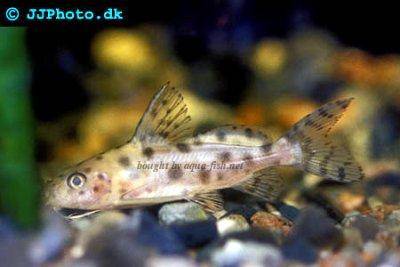



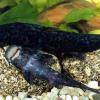 Euchilichthys
Euchilichthys 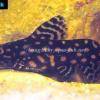 Angel
Angel 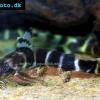 Brichard’s
Brichard’s 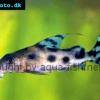 Decorated
Decorated 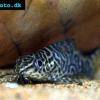 Featherfin
Featherfin 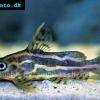 Orangestriped
Orangestriped 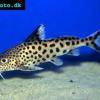 Cuckoo
Cuckoo 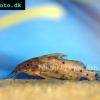 Lace
Lace 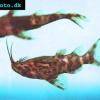 Upside-down
Upside-down 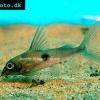 One
One 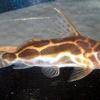 Robert’s
Robert’s